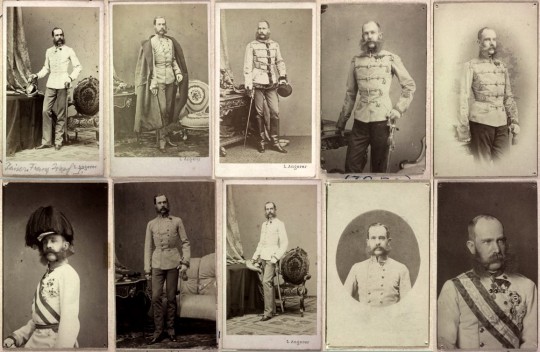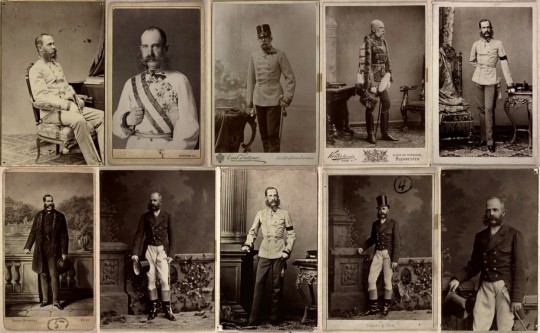Text
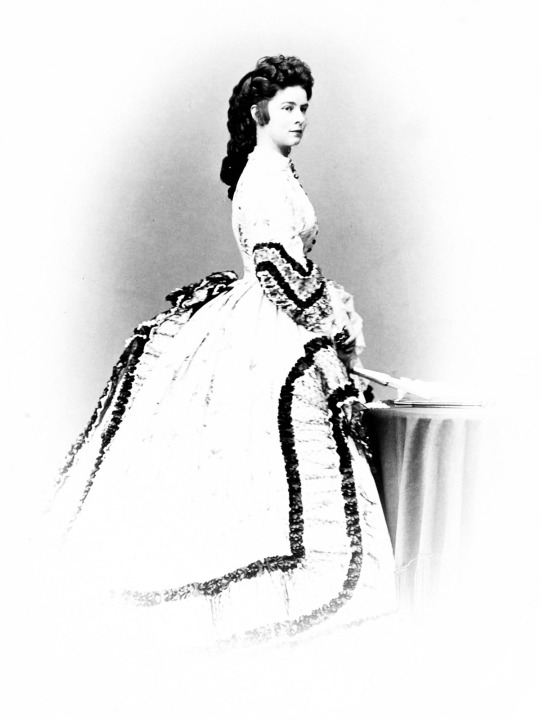
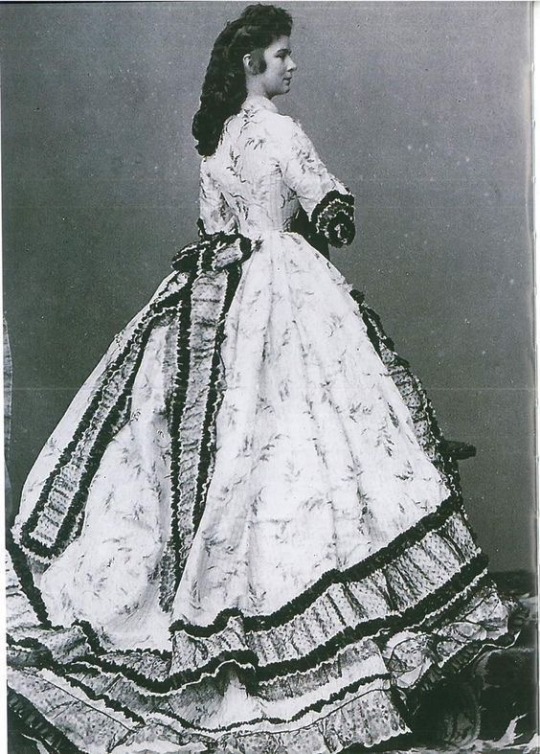
Elisabeth in 1864.
#duchess elisabeth of bavaria#elisabeth of austria#empress elisabeth of austria#empress sisi#kaiserin sisi#royalty#sisi of austria#old photographs#1860s#1860s dress#1864
53 notes
·
View notes
Photo

“Prisoner, imprisoned in vain I yearn for the blue sky Iron bars, cold, hard wretches despise my bitter nostalgia ”
- Empress Elisabeth of Austria
119 notes
·
View notes
Text
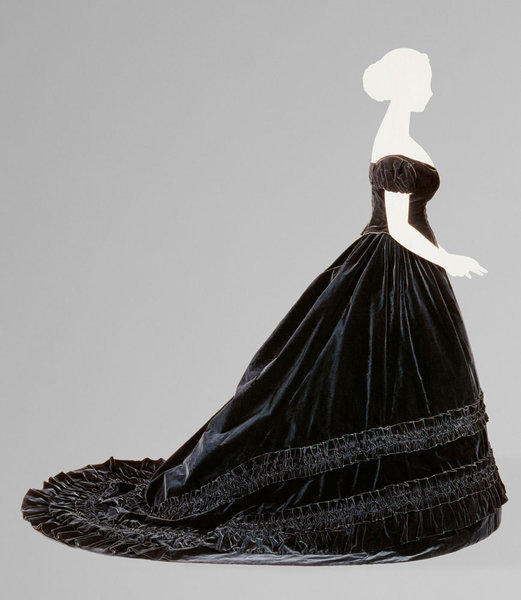
Evening dress of Empress Elisabeth of Austria, 1860-65.
723 notes
·
View notes
Text
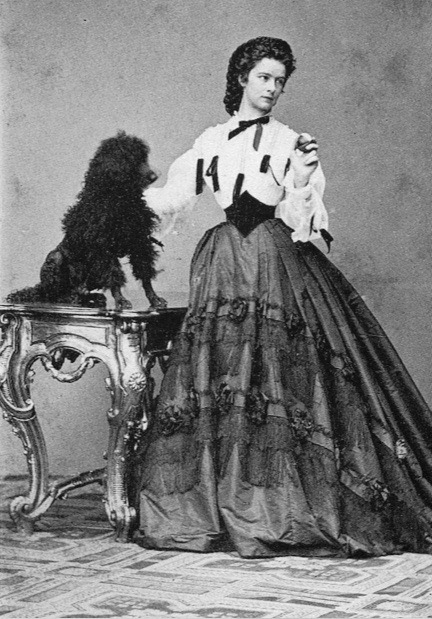
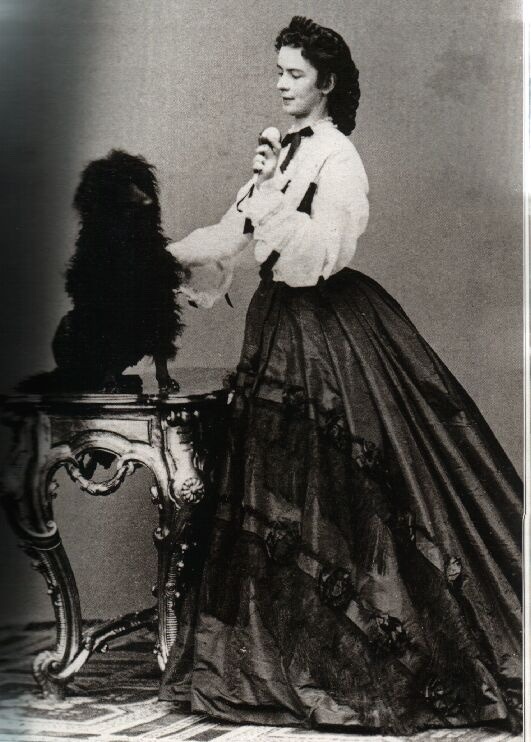

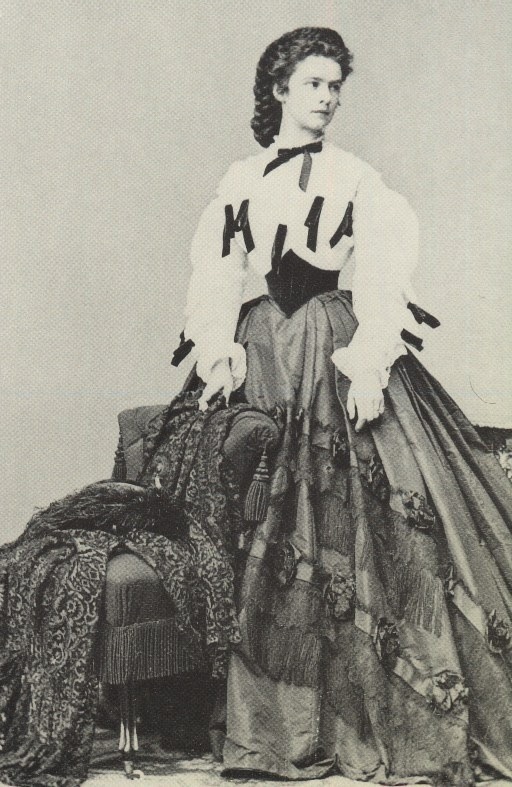


Elisabeth’s photographs taken by Victor Angerer in 1864. In the first two photographs, you can see Sisi’s black poodle named Platon.
#duchess elisabeth of bavaria#elisabeth of austria#empress elisabeth of austria#empress sisi#kaiserin sisi#royalty#sisi of austria#1860s#old photographs#1860s dress#1864#circa 1860#1860s fashion#poodle#Victor Angerer#cute dog#dog
44 notes
·
View notes
Text
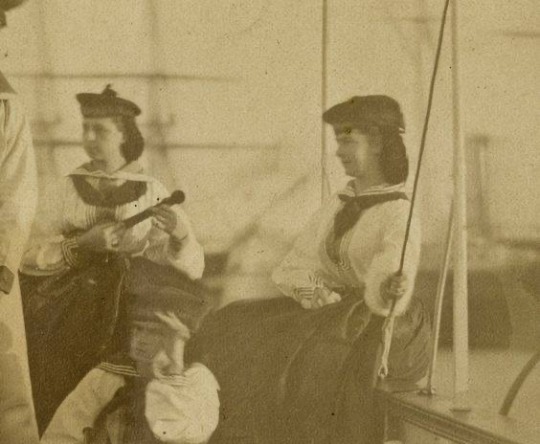


A photograph of Elisabeth (on the left) and her sister Helene (crouching in front of Sisi) with sailors.
#duchess elisabeth of bavaria#elisabeth of austria#empress elisabeth of austria#empress sisi#kaiserin sisi#royalty#sisi of austria#old photographs#helene in bavaria#sisters#sisterhood#vintage sailors#boat#sailor uniform
21 notes
·
View notes
Photo
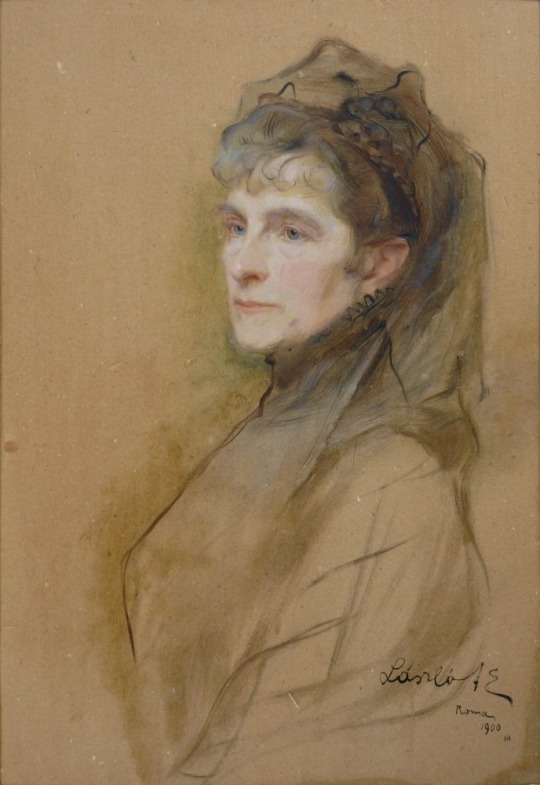
To H.R.H. Countess Caserta I was beholden for the pleasure of an acquaintance, one of the most interesting of all those whom I made in Cannes, with that royal Lady of Sorrows, Countess de Trani, sister of the ill-fated empress of Austria, and mother of the invalid princess of Hohenzollern, upon whom she was in loving attendance at the Hotel Calfornie in close vicinity to Chateau St. Michel. I suppose no one could have a more dramatic history than hers, one fuller of heart-breaking bereavments – and yet she was a lesson of noble resignation to the will of God, of heroic cheerfulness to all who came within the radius of her presence. A familiar sight in our bowery roads on the Calfornie hill was her tall, swiftly moving figure, so strongly resembling that of the empress of Austria, walking beside the invalid chair of Princess Hohenzollern, whose wit and spirit and vigorous young womanhood were doomed to an early ending in the following year. The death of this lady was so close for Countess Trani a cruel category of sorrows. The sudden violent death of her husband, Count Louis de Trani, the tragic breaking of the engagement of her younger sister with Ludwig, the mad king of Bavaria; the frightful fate of the same sister, who, as Duchesse d'Alencon, was burned up in the fire at the Charity Bazaar in Paris; the execution of her close kinsman, Maximilian, emperor of Mexico; the madness of his wife Carlotta; the calamitous death of her nephew, Prince Rudolph of Austria, and, darkest tragedy of all, the assassination of her beloved and radiant sister, the Austrian empress, made up her litany of woes, soon to come to a climax in the loss of her only child.
Recollections Grave and Gay, Mrs. Burton Harrison, 1911
32 notes
·
View notes
Text
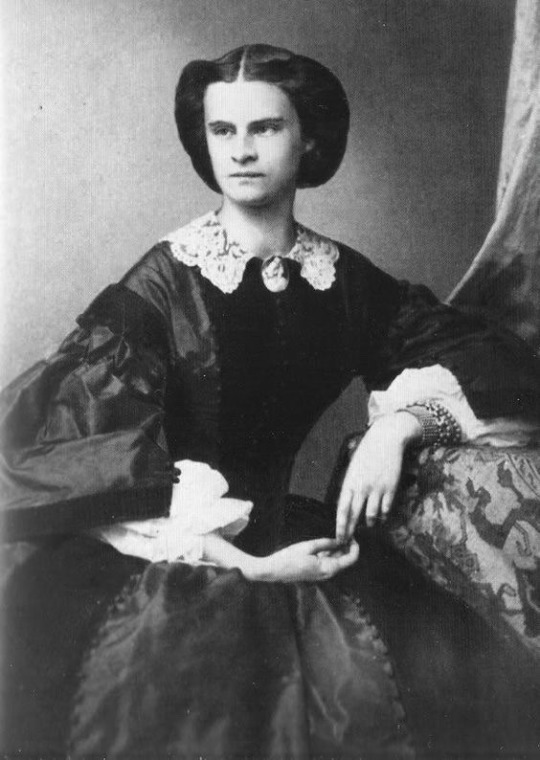
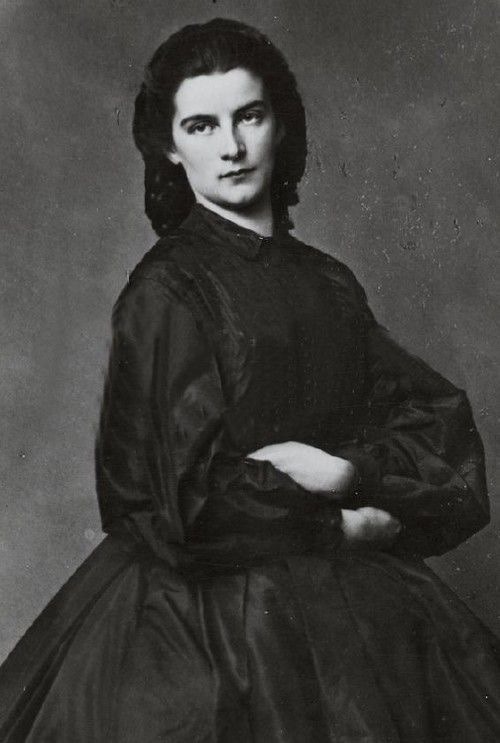
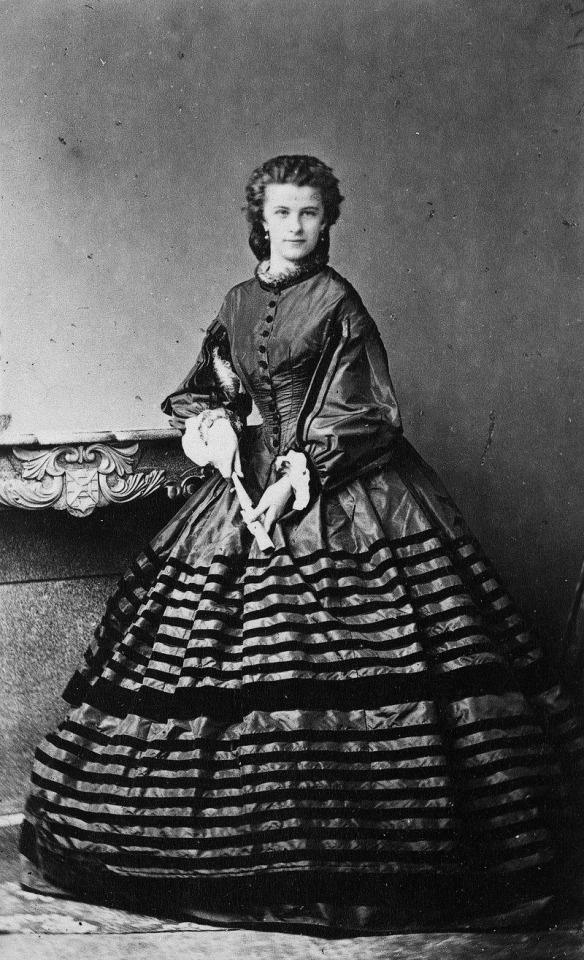
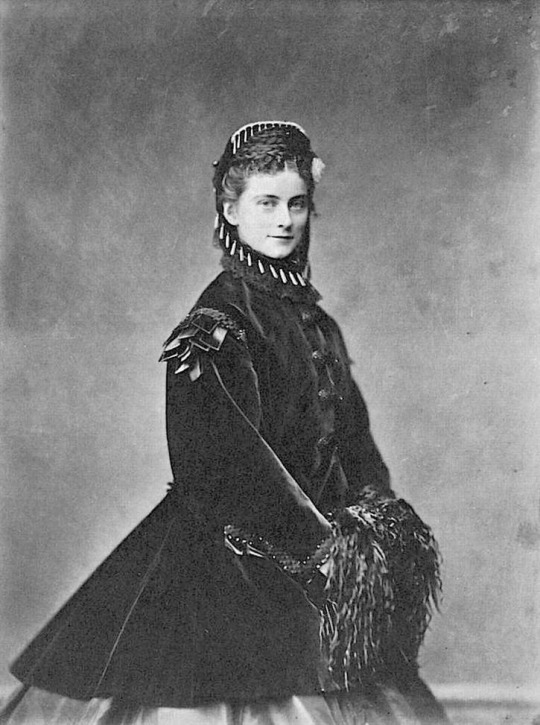
The four sisters of Elisabeth (left to right) :
Helene Caroline Therese, Duchess in Bavaria then Hereditary Princess of Thurn and Taxis. (1834-1890)
Marie Sophie Amélie, Duchess in Bavaria, Duchess of Calabre then Queen Consort of the Two-Sicilies. (1841-1925)
Mathilde Ludovika, Countess of Trani. (1843-1925)
Sophie Charlotte Auguste, Duchess in Bavaria then Duchess of Alençon. (1847-1897)
#Marie-Sophie in Bavaria#Helene in Bavaria#Mathilde in Bavaria#Sophie-Charlotte in Bavaria#old photographs#portraits#sisters#sisterhood
14 notes
·
View notes
Text

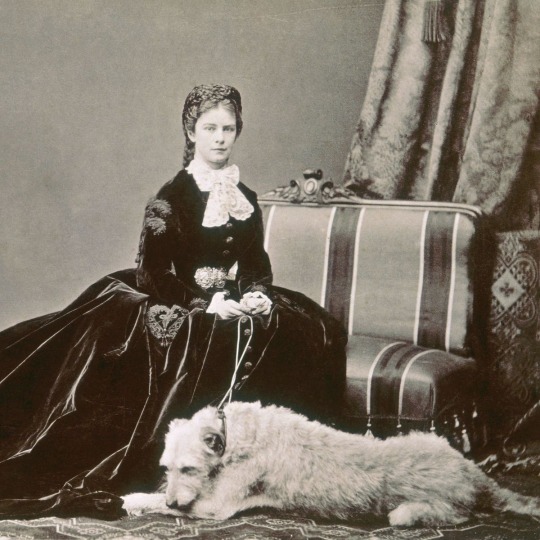
Elisabeth with her Irish Wolfhound, Shadow.
The Irish Wolfhound was one of her favourite dog breeds. She named her first Irish Wolfhound puppy "Shadow", and the dog was aptly named as it followed her from room to room. This was the first dog to carry that name, and at least two others "inherited" it. - https://www.authorapiperburgi.com
#duchess elisabeth of bavaria#elisabeth of austria#empress elisabeth of austria#empress sisi#kaiserin sisi#royalty#sisi of austria#dog#doglover#cute dog#old photographs
129 notes
·
View notes
Text
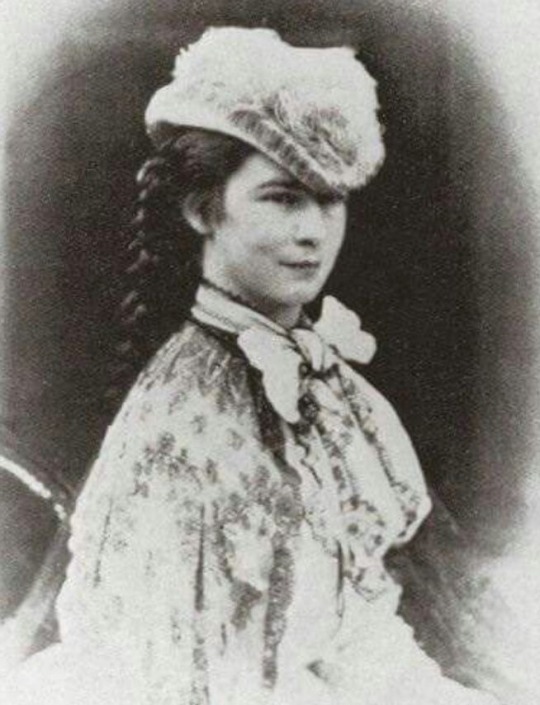
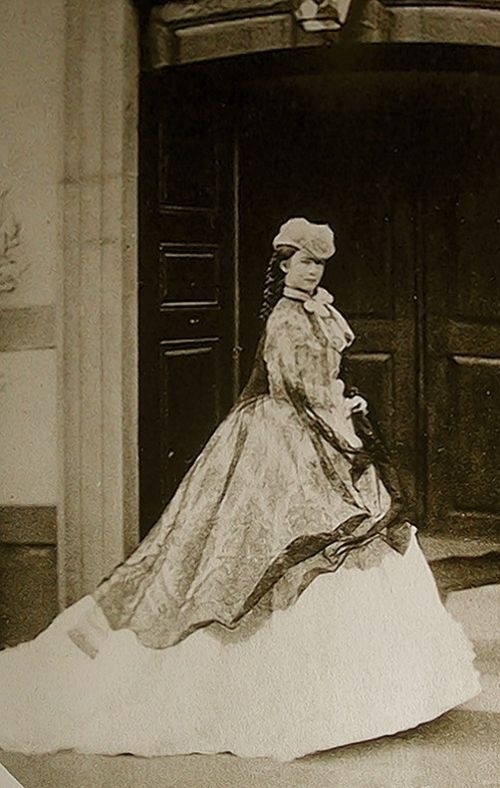
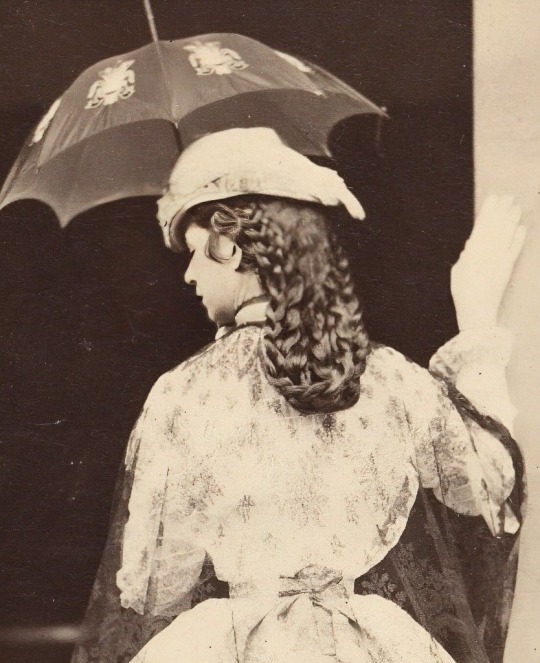
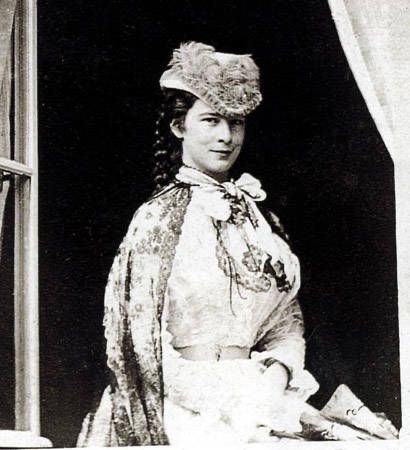
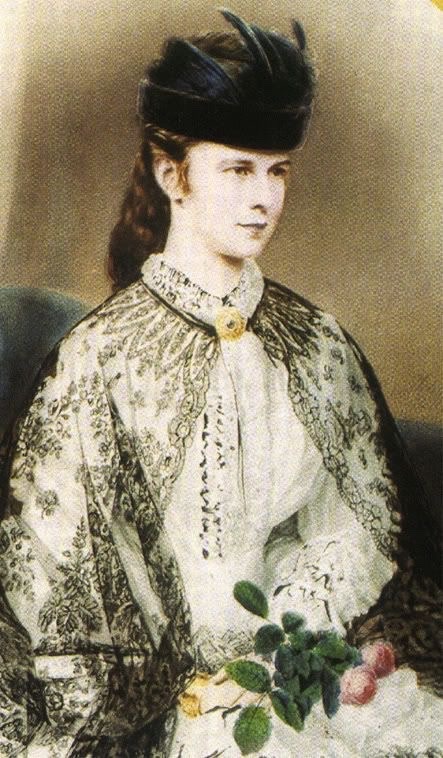
Elisabeth in Hungarian outfit photographed by Oscar Kramer in 1865.
#duchess elisabeth of bavaria#elisabeth of austria#empress elisabeth of austria#empress sisi#kaiserin sisi#royalty#sisi of austria#1865#old photographs#1860s fashion#1860s dress#1860s#hungarian
36 notes
·
View notes
Text
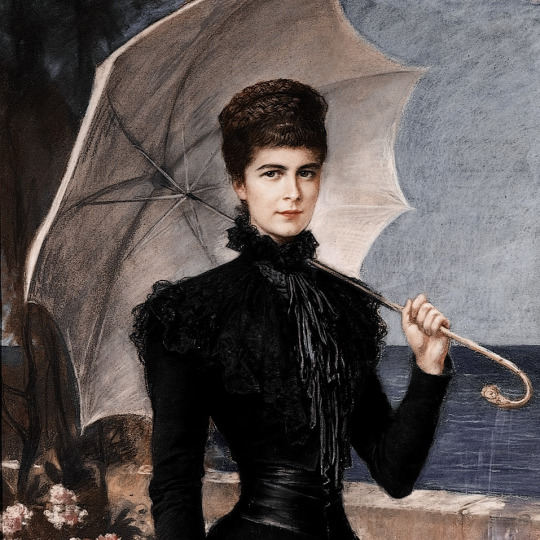

Empress Elisabeth of Austria and her Corfiot palace through the eyes of the Greek royals.
Greece was destined to offer the Empress Elisabeth the hospitality of its soil. She chose Greece as the country where she would hide herself and her sorrow. At Corfu she bought a site of ground from an old Corfiote Statesman called Braïla, and on it she built the Palace which she called "Achilleion", after her hero Achilles, whose statue was in the middle of the top garden terrace, and represented him at the hour of his death, drawing the arrow out of his heel. When in Corfu, it was understood, she was to be strictly incognito, and her wishes were always respected. One day, suddenly, when we least expected it, she arrived at Athens, having travelled by the ordinary steamer, and called at the Palace accompanied by a lady -in-waiting. She asked the porter whether she could see the King and Queen. On the porter's inquiring who she was, she replied she was "the Empress of Austria." Whereupon we were brought down to verify that statement . It seemed impossible╴but it was the Empress of Austria! Needless to say she obtained her interview, and after half an hour's conversation she took her departure, insisting that her visit should not be returned by my parents. As she was anxious to study Greek culture, she decided to learn modern Greek, and applied herself to the task with great energy and perseverance. She engaged a tutor for Greek conversation. Her first was Dr. Christomanos, an author and poet, who wrote a charming life of the Empress, which was translated into several languages. Her last was Count A. Mercati, who afterwards became Master of King Constantine's household. Accompanied by her tutor, the Empress used to go off on a five or six hours' walk, all over the island; and even for the picturesque ceremony of combing and brushing her hair the tutor had to be present, talking Greek to her all the time. She learnt to speak Greek quite faultlessly. In the arrangement of her house the Empress took great pride, setting up the statues of all her new "Gods"; Sophocles, Euripides, Plato and Aristotle. She also had a statue of Heine, the poet, erected in a shrine. When the Kaiser bought the Achilleion, he at once banished Heine, and raised Achilles from his recumbent position into a standing War Lord, with gilded helmet and shield, so that the first sight of Achilleion should be his glittering helmet. It is a pity that the Empress tried to improve the natural beauty of the spot. Her lack of taste, I may even ungraciously say her eccentricities, were almost an eyesore. There was a grotto of artificial rock and mirrors, destined as a home for monkeys, who luckily never came to inhabit it. Though the island abounded in oranges, she sent to Italy for her fruit. The view from the terrace over all the plain of Corfu, with its olive groves groups cypresses on one side and the sea and the mountains of Albania on the other one of the most exquisite I have ever seen.
The memoirs of His Royal Highness, Prince Nicholas of Greece and Denmark, My fifty years, 1926.
I was a child when the Empress came to Athens and saw her only once or twice, but I remember her more vividly than many people I knew far better. I imagine it was the same with everyone who came in contact with her. Her brilliant, beautiful and restless personality left an indelible impression. She was so enchanted with Greece that she decided to build a villa in Corfu. The site she chose could not have been more beautiful, about twelve miles outside the town, set on a high hill overlooking the sea on one side and a chain of mountains on the other. But she was too impatient even to look at the plans and gave the architect carte blanche. So instead of the simple cottage she had intended he erected an orate and hideous palace lavishly adorned with frescoes, statues and bronzes of every description. This atrocity cost the Austrian Govemment twelve million crowns, I believe. The Empress's life was dominated by the fear of losing her beauty. As she grew older it became an obsession. Hours were spent every moring brushing the glotious brown hair that she wore gathered into two great plaits coiled around her head. This hair-brushing was a matter of solemn ritual. Any hairs that fell out during the process were carefully collected and presented to the Empress on a silver salver. If their number proved to be too many the entire day was blackened to her. Once a captain of a Russian gunboat reported that he had seen a yacht coming into the Piraus harbour with a woman seated on the deck whose mass of hair reached down to the ground while two attendants stood behind her brushing it. " That could only be the Empress of Austria." said my father, when he heard the story. Later in the day a carriage drove up to the Palace and a mysterious visitor was announced, a lady who refused to give her name. It was, as we expected, the Empress Elizabeth. She insisted on preserving a strict incognito while she was in Greece, although it seemed rather unnecessary, since everyone knew who she was. She detested nothing so much as being photographed, or even looked at for that matter, and always carried a large fan with her on her walks, so that she could unfurl it and hide her face from the passers-by. The Empress was a fine woman in many respects, far finer, I think, than most of her biogtaphers have represented her. Intelligent, intuitive, sensitive, she had all the qualities to make a great empress. But she was tragically lacking in a sense of proportion. Even in the small issues of everyday life she had no idea of modera-tion. She could not take anything up without making it a mania. While she was in Corfu she set herself to learn Greek, although she had gone there to rest. Now Greek is a complicated language and its study is hardly to be recommended as a restful pursuit. The Empress certainly did not regard it as such either for herself or any one else, for she wore out her two teachers, Count Mercati and Mr. Christomanos. Every day she walked ten or twelve miles with one or the other, talking Greek all the way and, even during the hair-brushing ceremony, one of them was always present reading to her. Her figure became another obsession with her. Although she was exaggeratedly slender when she came to Greece (she weighed, I believe, only seven stones) no Hollywood film star could have followed out a more Spartan regime. Her constant dieting made her irritable and depressed. Even when she lunched with my mother and father she would often eat nothing but a salad and some fruit, and she would start off immediately afterwards on one of her exhausting walks, skimming over the ground like a restless, beautiful wraith.
The memoirs of His Royal Highness, Prince Christopher of Greece and Denmark, 1938.
130 notes
·
View notes
Text
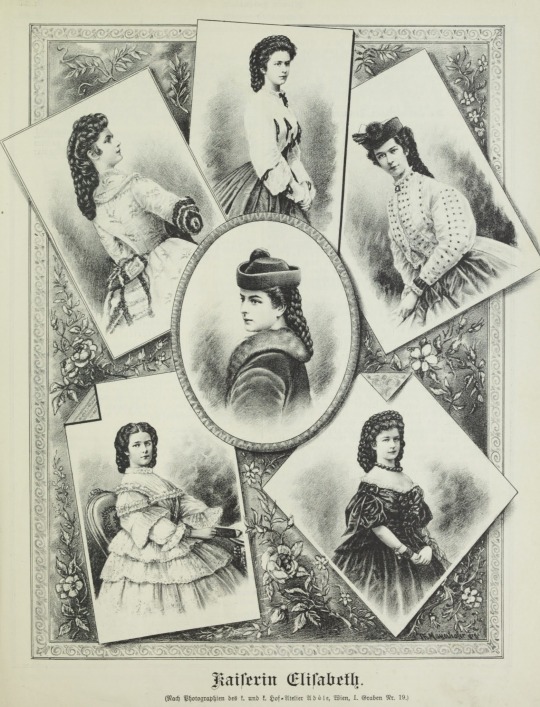
Drawings of Elisabeth’s based on the photographs of Adèle’s studio. (Wiener Salonblatt, 24th september 1898)
44 notes
·
View notes
Text
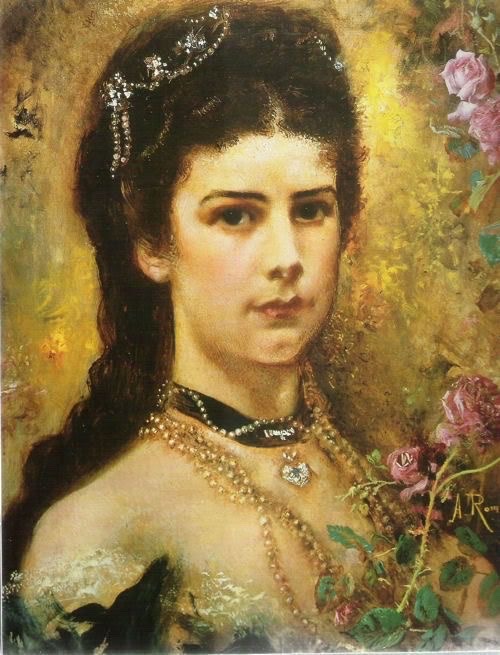
Elisabeth’s portrait painted by Anton Romacko. (circa 1880)
50 notes
·
View notes
Text
Another one…

Elisabeth’s mourning dress for the funeral of her cousin Louis ll of Bavaria. (probably 1886)
59 notes
·
View notes
Text
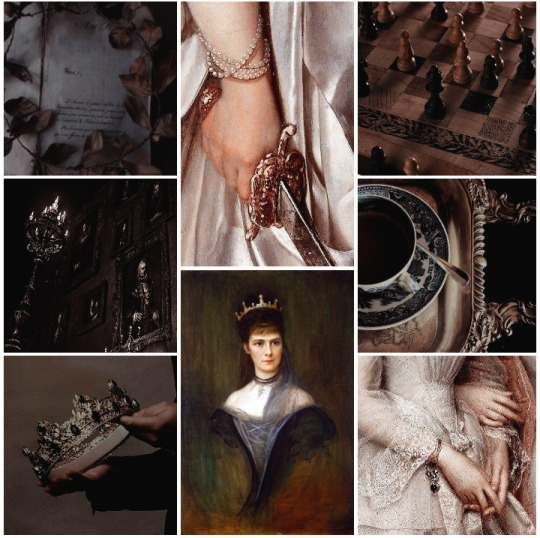
Empress Elizabeth of Austria, Queen of Hungary
"Don't Make me sad, dont make cry, sometimes love is not enough and the road gets tough, I don't know why.." born to die
Happy birthday Sissy💓💫💋
59 notes
·
View notes
Text
A post from my old blog.
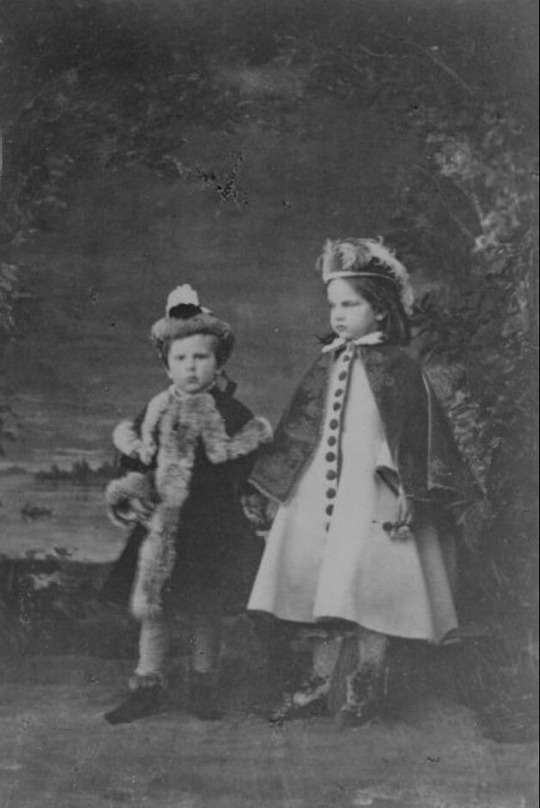
Rodolphe and Gisele photographed at Venice in the 1860s.
46 notes
·
View notes
Text
I just went to find a post of my old and first account 😭
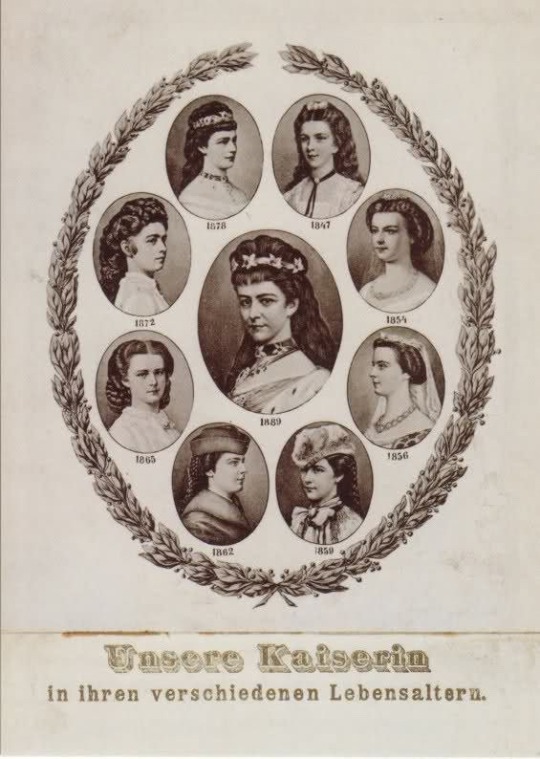
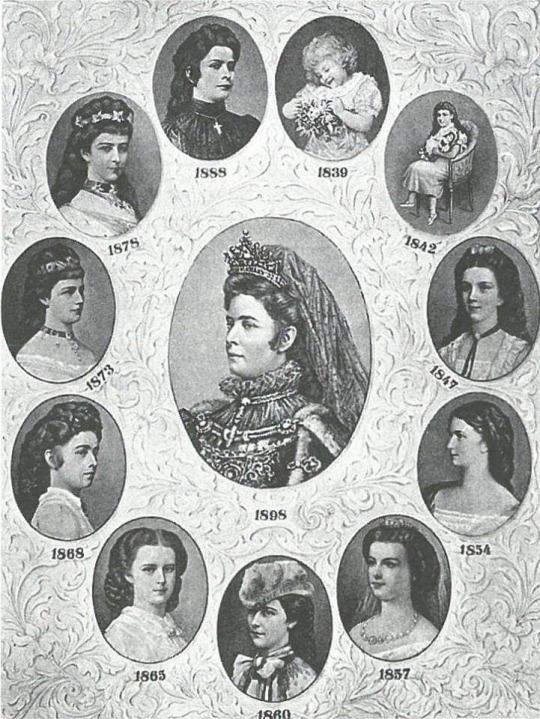

3 funerals cards representing Elisabeth’s appearance through her life.
29 notes
·
View notes
